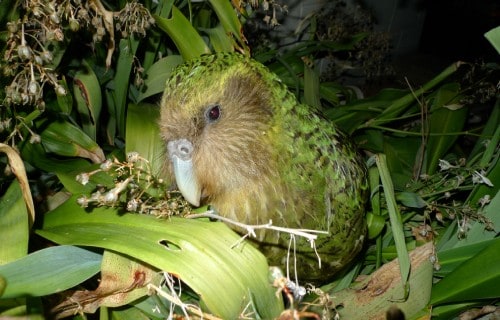
Photo: Department of Conservation
CCL: http://bit.ly/2xQPH8p
We sincerely hope that you greatly enjoy this article about 4 Bemusing New Zealand Birds. This part of the world remains well known for its incredible forms of life, and its avians are no exception to that. Obviously, these represent only a few of the many species in the region. But, we hope that these 4 Bemusing New Zealand Birds serve to whet your appetite for more.
Cassowary
Cassowary Facts
- Leading off this article about 4 Bemusing New Zealand Birds is the amazing species known as the Cassowary.
- Firstly, the simple term actually applies to a genus of large flightless birds. Currently, three species still exist today. Also, the Southern Cassowary remains by far the most common of the three varieties.
- In addition, among known similar birds, this fascinating animal also ranks as the second heaviest, and third tallest of them all. Further, the truly unique birds generally remain quite reclusive, and also highly elusive.
- But, the species also remains quite shy, even more so than most wild animals. The large bird also continues to be well known for its ability to rapidly disappear into the dense rainforest when approached.
- Finally, the rather surprising animal generally has a remarkably shy demeanor, as well. However, if provoked the creature does has the ability to inflict serious, possibly even fatal, injuries to humans.
Cassowary Physical Description
Most notably the amazing species displays a comparatively moderate degree of sexual dimorphism. Due to this physiological trait, among all three species of Cassowary, the female typically develops as the larger of the genders.
But regardless of this, most males still typically attain a remarkable average height of around 5.9 ft (1.8 m). Meanwhile, females often reach a height of as much as 6.6 ft (2 m). Further, large females sometimes weigh as much as an amazing 129 lb (58.5 kg).
The feathers of females also generally appear more colorful than those of the males. The wings remain vestigial and extremely small. The legs of this bird develop as rather powerful. Individuals have the ability to run at speeds of as much as 31 mph (50 km/h).
It also has a long, sharp claw on the middle of each of the three toes. This claw sometimes grows to a length of as much as 5 in (12.6 cm). This serves as a powerful means of self defense, since it can strike with great force and accuracy.
- Kingdom: Animalia
- Phylum: Chordata
- Class: Aves
- Order: Casuariiformes
- Family: Casuariidae
- Genus: Casuariius
Cassowary Distribution, Habitat, and Ecology
Most notably, the Cassowary evolved as endemic to the extremely wet and humid rainforest. It only occurs naturally in a few specific areas. These regions include New Guinea, northeastern Australia, and local islands.
It also has a tendency to wander into grasslands, savanna, and swampy regions in search of food. Except for mating season, the Cassowary usually lives as a solitary animal. Males appear to be highly territorial, and females seem to be less territorial.
The bird can also deliver a serious, even fatal blow with this dangerous claw. Though attacks on humans rarely occur, there have been serious injuries, even fatalities reported. Nature designed it with a means of defending itself.
Finally, the animal evolved as primarily frugivorous in its eating habits. But, sometimes individuals will also supplement that with the occasional flower, snail, frog, rodent, etc. These it feeds on opportunistically.
Little Penguin
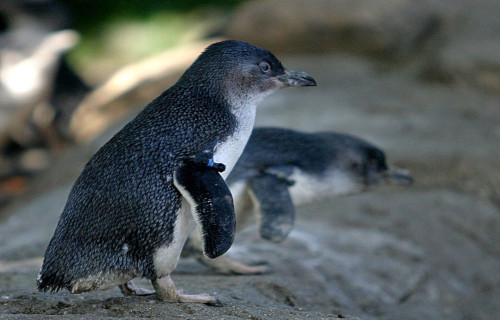
CCL: https://bit.ly/1p2b8Ke
Little Penguin Facts
- The next animal featured in this compilation of 4 Bemusing New Zealand Birds is the remarkable Little Penguin.
- First of all, the mesmerizing flightless bird may surprise you. That’s because its adorableness conceals several amazing facts. Most notably, though, remains the simple fact that it ranks as the smallest of all known varieties of penguin.
- Also, the marvelous avian does not live in extreme cold. Many people erroneously assume all penguins do. Rather, like some similar species, the Little Penguin actually lives in a decidedly temperate environment.
- Further, in various parts of its native range, the marvelous bird sometimes goes by other names. These include fairy penguins and blue penguins. In addition, the Maori call it the kororā.
- Quite fortunately, the marvelous animal also appears to exist in large numbers. Yet another fact that separates it from many related species. Therefore, the IUCN currently lists it as Least Concern.
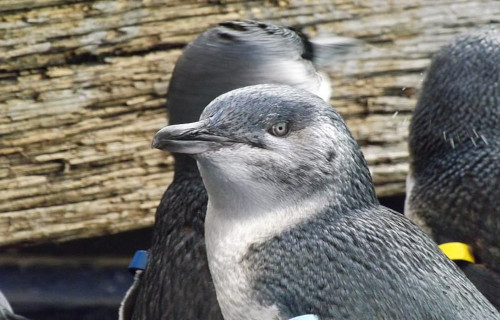
CCL: https://bit.ly/1xMszCg
Little Penguin Physical Description
First and foremost, the wonderful Little Penguin lives up to its common name. That holds true due to the diminutive size of the remarkable animal. In its case, both genders attain roughly the same height and weight.
Therefore, height averages only 13 in (33 cm), and weight averages 3.3 lb (1.5 kg), in both genders. But, the species does display sexual dimorphism. However, in this instance, it appears in the size of the bill. That of the male reaches a slightly greater length.
Further, the Little Penguin presents a unique color pattern. As a result, the head, wings, and back typically appear a distinctive blue in color. Meanwhile, the front part of the body of the bird usually displays a bright white.
Additionally, small light gray patches surround the very small ears. But it does not end there. In addition to all this, the feet also present a unique appearance. That’s true since the top show a light pink, while the soles appear black.
- Kingdom: Animalia
- Phylum: Chordata
- Class: Aves
- Order: Sphenisciformes
- Family: Spheniscidae
- Genus: Eudyptula
- Species: E. minor
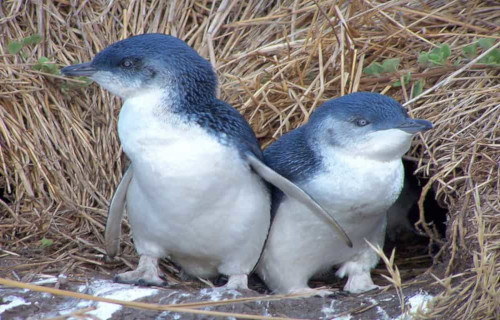
CCL: https://bit.ly/1iowB8m
Little Penguin Distribution, Habitat, and Ecology
Most notably, the fabulous Little Penguin has a surprisingly wide distribution range. Yet, even more amazing is the region it inhabits. This includes New Zealand and certain sections of Australia.
Within that area, however, it dwells in a specific habitat section. This mainly consists of the coastlines of the two countries. But, the unique animal also inhabits several islands within that area.
Further, like all penguins, the avian has an entirely carnivorous diet. Also mirroring related species, this mainly consists of various small types of fish. However, it also dines on small crustaceans and cephalopods.
In turn, however, the animal itself has several natural predators. But, these mainly consist of sea eagles and long-nosed fur seals. However, individuals often perish as accidental bycatch in commercial fishing nets.
Additionally, the genders mature at different ages. Females reach maturity at about 2 years of age. Yet males do not mature until the age of 3. While breeding and nesting can occur as a singly pair, it most often occurs in colonies.
Kakapo

Photo: Department of Conservation
CCL: http://bit.ly/2xQPH8p
Kakapo Facts
- Appearing third in this listing of 4 Bemusing New Zealand Birds, the awesome Kakapo does so only due to random selection.
- First of all, the quite remarkable animal also goes by several other common names, just as many species do. In its particular case, these include names such as the night parrot and the owl parrot.
- In addition, this small, flightless bird also evolved as endemic to a highly restricted and rather isolated portion of the world. Sadly, however, this fact has not protected it as much as one might wish.
- As a result, this truly remarkable bird now sadly finds itself facing serious threats to its continued existence as a species. Its greatest threats include habitat loss, climate change, and also non-indigenous predators, such as cats, ferrets, rats, and stoats.
- Due to these various depredations, its known population only totals 148 extant individuals, as of April 2018. For this reason, among others, the IUCN now lists the amazing bird species as Critically Endangered.
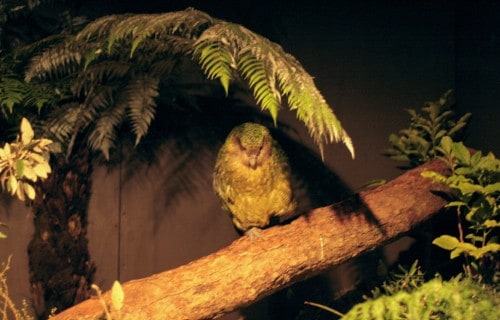
CCL: http://bit.ly/2zDnGC2
Kakapo Physical Description
Perhaps the most notable fact about the truly surprising Kakapo, rather surprisingly, remains its physical size. That’s true because this fascinating animal ranks as rather small, compared to some of the other flightless birds throughout the world.
This avian resembles a rather rotund parrot. The species also presents a moderate degree of sexual dimorphism. The larger males average about 4.4 lb (2 kg) in weight. Meanwhile, the smaller, and slightly less rotund, females only average about 3.3 lb (1.5 kg).
In coloring, the bird typically presents a striking combination of yellowish-green colors. Plus, this appears mottled with brownish gray or black on the upper side. The flank and breast also tend to have the same background colors, but the mottling consists of yellow.
- Kingdom: Animalia
- Phylum: Chordata
- Class: Aves
- Order: Psittaciformes
- Family: Strigopidae
- Genus: Strigops
- Species: S. habroptila
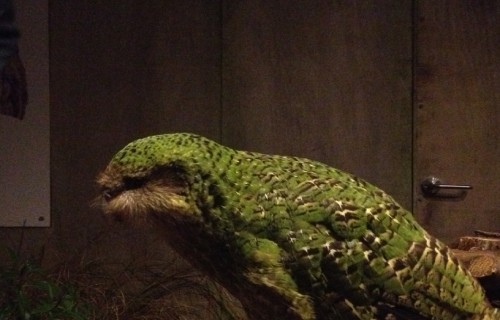
CCL: http://bit.ly/2IjEG4n
Kakapo Distribution, Habitat, and Ecology
The quite incredible Kakapo evolved as native solely to an extremely restricted habitat range. In fact, it only lives in what now comprises the island nation of New Zealand, near Australia. Currently, it only exists on three islands kept free of predators.
However, the tiny avian display impressive adaptability. That holds true because, in its native habitat, the avian inhabits a multitude of environments. These vary, of course, but often include forests, scrublands, grasslands, and also coastal areas.
But, although it adapts well in regards to it range, it still maintains certain behavior patterns. As a result, the bird primarily lives and feeds in a nocturnal manner. During the day it usually prefers to roost under various forms of cover.
It doesn’t let its grounded state slow it down, however. While the Kakapo remains incapable of light, it adapted into an extremely accomplished climber. The amazing creature uses this highly useful skill to find its food in the trees.
Finally, it also differentiates itself from its fellows in another manner. Unlike most other birds, this species remains entirely herbivorous. It usually feeds on a variety of seeds, leaves, fruits, and stems.
Yellow-Eyed Penguin
Yellow-Eyed Penguin Facts
- The fourth and final entry into this compendium of 4 Bemusing New Zealand Birds is the amazing Yellow-Eyed Penguin.
- Most notably, but truly unfortunately, the truly stunning species of penguin holds a special status. That holds true due to the lamentable fact that it now ranks as one of the rarest varieties of penguin in the world.
- But, regardless of its scant numbers, this amazing bird does have one thing working in its favor. The amazing bird actually has one of the longest natural lifespans of any related species. Individuals have the ability to live more than 20 years.
- However, few individuals succeed in reaching this age, due to a wide variety of reasons. But sadly, many of these reasons do not represent part of its natural environment. Yet these remain the same as those many species currently face.
- As a result, the animal faces two threats in particular. The primary threats that the magnificent creature faces include habitat degradation. But, it also suffers from the introduction of non-native predators.
- Finally, due to all these factors, it now has an estimated remaining population of fewer than 4,000 individuals. Quite understandably, because of this sad state of affairs, the IUCN now lists it as Endangered.
Yellow-Eyed Penguin Physical Description
First of all, regardless of its rather distinctive appearance, the marvelous Yellow Eyed Penguin might not stand out in a crowd. That’s because, compared to its many relatives, it remains a roughly mid-sized penguin.
However, the animal does display a slight degree of sexual dimorphism, like many animals. In its particular case, the males of the species slightly larger than females. Also, for undetermined reasons, male also usually have a longer lifespan.
In addition, mature adults most typically attain a height measuring between 24-31 in (62-79 cm). However, weights often vary significantly, depending on the time of the year, from 6.6 – 18 lb (3-8 kg).
Furthermore, its natural coloring also draws much attention. In addition to the typical black back, it also has a pale yellowish head, a multi-colored beak. All this only serves to enhance the distinctiveness of the distinctive yellow eyes.
- Kingdom: Animalia
- Phylum: Chordata
- Class: Aves
- Order: Sphenisciformes
- Family: Spheniscidae
- Genus: Megadyptes
- Species: M. antipodes
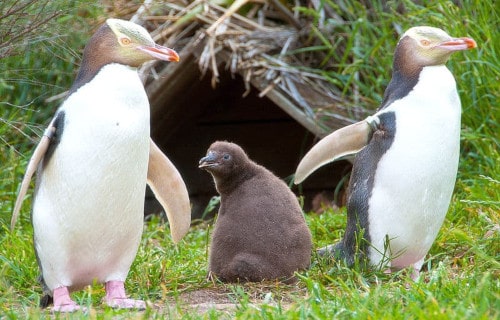
CCL: http://bit.ly/2xLZ0ap
Yellow-Eyed Penguin Distribution, Habitat, and Ecology
Most importantly, the marvelous Yellow Eyed Penguin, unfortunately, has an extremely restricted and rather isolated natural habitat range. In this manner as well, the fascinating bird mirrors some of its related kin.
This holds true due to the fact that it remains endemic to only specific portions of New Zealand. This area includes South Island, and also the bodies of land among the Auckland, Stewart, and Campbell Islands.
Further, this amazing avian typically nests in a habitat that might surprise many people. In fact, it most commonly prefers to make its home in regions of either scrub or forest. It also lives on gentle slopes or the shore itself, in small bays or headlands.
Similar to other related species, its diet also consists mainly of small fish caught near the seafloor. But this amazing flightless bird commonly augments its part of its diet with the occasional small cephalopod.
Finally, mankind created a special reserve for this amazing species in 2007. This special area includes a portion of its native nesting area, in an effort to assist in its preservation. To date, the benefit of these efforts remains undetermined.

CCL: https://bit.ly/1p2b8Ke
4 Bemusing New Zealand Birds
We truly hope that you have greatly enjoyed reading this article about 4 Bemusing New Zealand Birds as much as we enjoyed creating it. These animals evoke many emotions among those who learn of them, including awe and amazement, among others. Their variety is incredible. But sadly, many of these creatures, along with countless other species, now find themselves in peril. It remains up to each of us to do all that we can to protect them and preserve them.
Check out our other articles on 7 Geological Marvels of Asia, 6 Extraordinary North American Reptiles, 7 Highly Unusual Lakes, Fabulous Herbaceous Plants Named After Animals
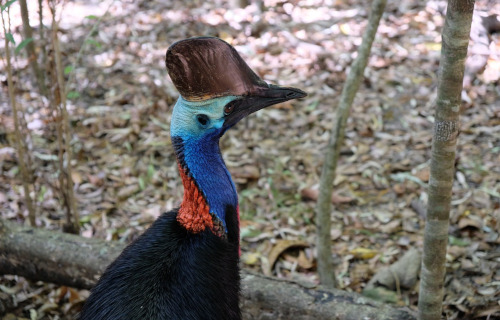
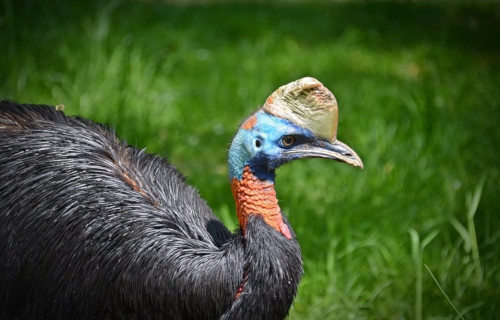
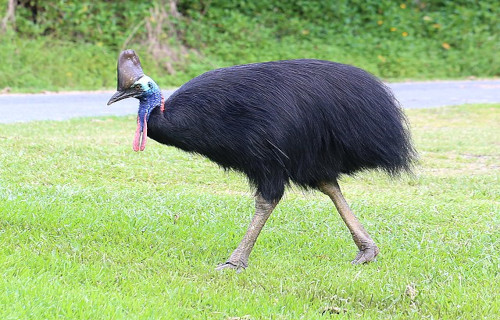
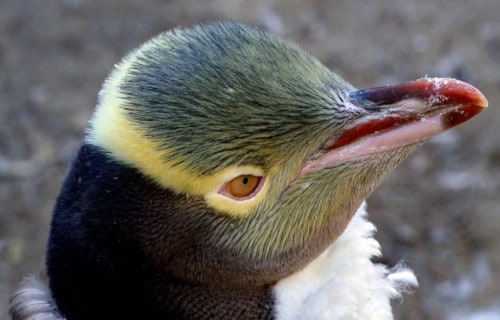










Leave a Reply